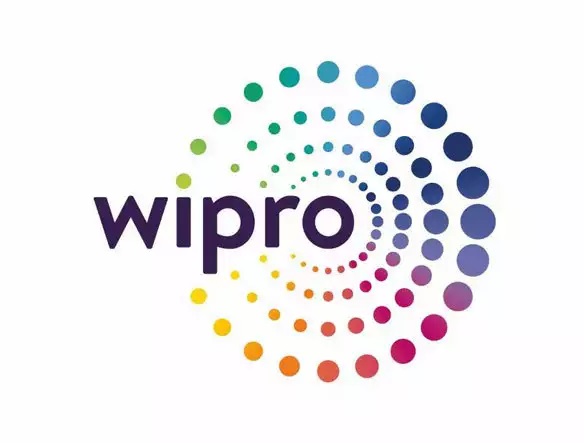Indian IT firms are actively combating attempts by talent-fishing companies to lure away their top professionals, resorting to strong measures, including legal action.
The defensive stance is particularly pronounced amid growth challenges stemming from a global slowdown in client spending.
For example, in response to a wave of departures at the senior management level, Wipro has initiated lawsuits against at least two former executives, including its ex-chief financial officer Jatin Dalal, who recently joined global competitor Cognizant.
The legal actions allege violations of employment contracts and related clauses.
Similarly, Infosys, the country’s second-largest IT services firm, has also reportedly accused Cognizant of employing “unethical poaching tactics” following the departure of several executives to the Nasdaq-listed company.
Legal and recruitment experts view these responses as strategic moves aimed at establishing precedents to discourage talent poaching by peer firms in a competitive market grappling with growth challenges and a shortage of senior-level talent.

Protecting Their Own
While non-compete employment contracts are generally not specifically enforceable in India, companies are now seemingly taking proactive measures to send a clear message and dissuade potential talent hunting by rival firms in a time of increased market competition.
Observers suggest that these companies may be anticipating further departures and are seeking to set examples through their actions.
The motivations behind Wipro’s lawsuit against Jatin Dalal, who spent 21 years at the company, remain unclear, with the next hearing scheduled for January 3.
Sudarshan from EMA Partners suggested that Wipro’s actions might be a measured response, noting, “So far, not many cases have played out in India, but largely courts have taken a lenient view on employees… But if companies can find a trail when it comes to violation of confidential information or breach of data or intelligence, it could get unfavorable for the executives.”

Examples Of The Legal Tussle
While there are limited precedents, a notable case in 2018 involved Infosys suing its former CFO Rajiv Bansal.
Bansal had contested Infosys’ decision to suspend a severance pay of about Rs 12.2 crore, accusing him of breaching confidentiality agreements and deleting data. Point to be noted, the arbitrator ruled in Bansal’s favor.
Anshul Prakash from Khaitan & Co mentioned, “More than the question of law, the strategic perspective of employers has undergone change as far as breach of restrictive covenant by a senior executive is concerned… Non-compete covenants intended to apply post-employment cannot be specifically enforced.”
However, he added that this might not deter organizations from pursuing legal action to make a strong statement.
The Game Of Chairs
Over the past year, Infosys and Wipro collectively lost more than 15 senior-level executives to major rivals.
Notably, former Infosys presidents Mohit Joshi and Ravi Kumar S assumed CEO roles at Tech Mahindra and Cognizant.
Moreover, since January, Kumar has reportedly hired around 20 executive vice presidents and four senior vice presidents from Infosys and Wipro.
The industry is grappling with growth challenges amid subdued business over the last few quarters due to client technology spend uncertainties, geopolitical factors, and the impact of evolving artificial intelligence disruptions.
The battles for talent occur at a time when the Indian IT industry, valued at $245 billion, is potentially facing one of its slowest business expansions in the year ending March 2024.
Moorthy Uppaluri, former managing director at Randstad India, noted, “IT companies are running out of ideas to accelerate growth and realize the previous growth numbers.” The industry is now focusing on homegrown leaders from established companies like Infosys and Wipro to meet market and customer expectations.

No-Poaching Agreements, International Cases
In 2010, the US Department of Justice (DOJ) took legal action against high-profile Silicon Valley tech giants such as Apple, Intel, and Google for engaging in “cold call” prevention or poaching each other’s skilled engineers.
Dissatisfaction over breaches of this agreement was evident in emails exchanged among top executives of respective companies; the ensuing settlement in 2015, amounting to $415 million (INR 3,400 crores), stressing the serious repercussions of such practices.
Similarly, in 2017, leading digital animation companies, including Walt Disney, Lucasfilm, Pixar, DreamWorks, and Sony Pictures, settled claims for $169 million (INR 1,400 crores) related to no-poaching and wage-fixing agreements (NPAs).
NPAs The Common Route
Critical to any successful business is a skilled workforce, and companies often resort to various strategies, including contractual obligations, special perks, or no-poaching agreements (NPAs) with competitors to retain valuable employees.
NPAs involve arrangements between employers that limit the hiring or solicitation of each other’s staff and may include agreements to fix employee pay levels and other benefits.
First Steps, India
Recent reports suggest that major business groups in India have entered into NPAs, signalling a pact not to hire talent from each other.
However, the central question revolves around whether such agreements stifle competition in the labour market and counter free market principles—an issue that falls under the purview of competition laws.
Global competition and antitrust authorities are increasingly scrutinizing and taking action against NPAs, viewing them as detrimental to competition in the labor market.
Such agreements are believed to curtail employee mobility, suppress wages, and impede new businesses from entering the market due to difficulties in hiring qualified personnel.
In the United States, antitrust authorities, with decades of experience handling NPAs in various sectors, underwent a significant policy shift in 2016.
The DOJ and the Federal Trade Commission issued joint guidance on NPAs, indicating their intent to criminally investigate and prosecute such agreements.
In October 2022, the DOJ secured its first criminal NPA conviction against VDA, a healthcare staffing company accused of colluding with a competitor to avoid recruiting or hiring each other’s nurses while keeping nurse wages stagnant.

In Europe, while the European Commission (EC) traditionally did not focus on labour markets, several member states, including France, Spain, and Germany, have taken enforcement actions against NPAs, considering them as cartels.
Notably, the EC and the UK Competition and Markets Authority (CMA) have signalled their intention to closely monitor developments in the US and anticipate high-profile investigations and increased enforcement in the years to come.
The evolving global scene indicates growing scrutiny of NPAs and their potential implications for fair competition in the labour market.
Indian competition law, fashioned after the competition laws of the United States and the European Union, doesn’t explicitly address No-Poaching Agreements (NPAs).
However, the Competition Commission of India (CCI) can scrutinize these agreements under Section 3(3) of the Competition Act, 2002, dealing with anti-competitive horizontal agreements, including cartels.
This is because NPAs impact employee compensation and exert control over the supply of skilled labour in the employment market.
In the wake of amendments to the Competition Act, HR and consulting firms facilitating such agreements may also find themselves subject to competition law scrutiny.
Companies, even if they produce different products or offer distinct services, are considered competitors in the employment marketplace if they vie for the same pool of skilled workers.
Given the current trend of heightened employee mobility, retaining key personnel has become a considerable challenge; while traditional methods may be imperfect, engaging in illegal agreements like NPAs offers no improvement.
Although the CCI has yet to rule on a case involving NPAs, companies, recruiters, and HR professionals must be cautious about competition law when formulating employment policies to avoid substantial fines for both companies and their executives.

Talent Poaching, The Viewpoint
Talent poaching, the strategic acquisition of skilled employees from one organization by another, is a practice that has become increasingly prevalent in the competitive domain of today’s global workforce.
While it may offer companies a quick solution to acquiring top-tier talent, it is a double-edged sword with implications that extend beyond immediate gains.
Negative Viewpoint –
Talent Drain and Disruption – One of the primary criticisms of talent poaching is the potential destabilization it introduces to organizations.
Losing key personnel can result in a drain of institutional knowledge, disrupt established workflows, and compromise team dynamics.
It can be especially damaging when the poached employees hold critical roles or possess unique skill sets that are challenging to replace.
Adverse Effects on Workplace Morale – Talent poaching can also lead to diminished morale among remaining employees, especially if teams are poached.
For example, witnessing colleagues leave for competing organizations may instil both uncertainty and reduce confidence in the stability of one’s current workplace.
It can thus result in decreased productivity, lower employee engagement, and a potential exodus of other talented individuals seeking more secure professional environments and promising career growth.
Positive Viewpoint
Innovation and Expertise – From a positive perspective, talent poaching can stimulate innovation and bring fresh perspectives to the hiring organization.
Acquiring individuals with experiences can promote a dynamic work environment that encourages creativity and out-of-the-box thinking.
The injection of new blood into a company’s talent pool can lead to enhanced problem-solving, improved processes, and heightened competitiveness within the industry.
Market Competition and Growth – In a broader context, talent poaching reflects a competitive job market where organizations actively seek the best talent to drive growth.
From this standpoint, talent poaching may fuel healthy competition among companies, pushing them to offer better compensation packages, work environments, and career development opportunities.
This competition can, in turn, elevate industry standards and contribute to overall economic growth.

The Last Bit, Talent poaching is a complex phenomenon that elicits both negative and positive consequences.
While it can spur innovation and elevate market competition, it also has the potential to disrupt organizations, sow discontent, and create an atmosphere of instability.
Thus, balancing acquiring top talent and maintaining ethical recruitment practices is crucial for organizations aiming to thrive in today’s dynamic business environment.
In the current context, in the crucible of talent wars, where strategic decisions and legal battles intersect, the Indian IT industry is going through a transformation.
As companies grapple with growth challenges and leadership transitions, pursuing legal recourse to protect valuable human capital may become a defining feature.
The industry’s future may be shaped not only by legal precedents but also by the strategic shifts in talent acquisition and the evolving expectations of a market in flux.
Whether these measures will effectively shield companies from talent raids or if they mark a turning point in how the IT sector approaches employee mobility remains to be seen.
However, one thing is clear – the battle for talent in India’s IT sector is far from over.
